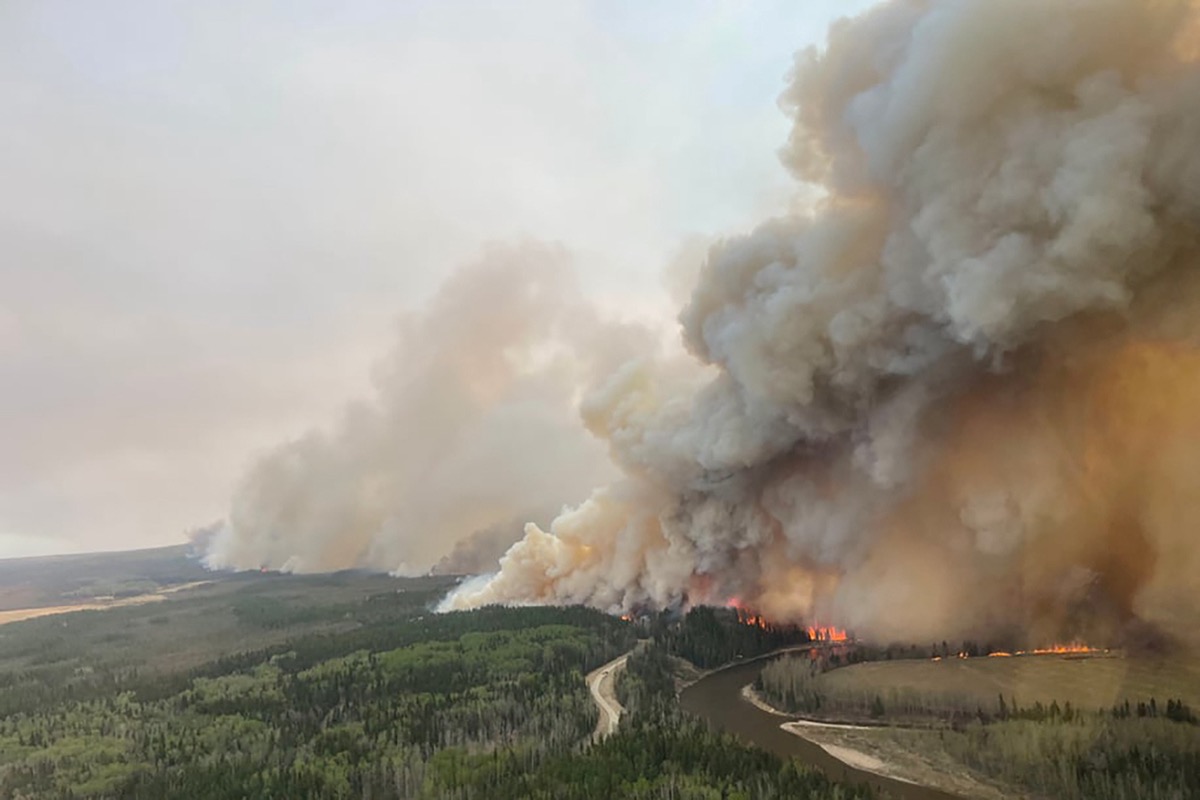In recent days, Canada has been hit by unprecedented wildfires for this time of year, forcing the evacuation of thousands of people.
More than 100 fires, thousands of displaced people and firefighters on the front line: Canada is facing gigantic forest fires.
This phenomenon is unprecedented at this time of year, in early spring. However, the particularly high temperatures for the time of year can explain the outbreak of fires.
Weather conditions conducive to fires
Last week, very high temperatures were recorded for early May in the various provinces now affected by the fires, particularly Alberta. After CBC/Radio Canadamercury even reached 30°C in places earlier in the week.
“Temperatures have been 10 to 15 degrees above normal for some time,” said Christie Tucker, director of Alberta’s wildfire information unit. “There is still no green grass and no leaves throughout the province, which means the ground is very dry,” she added over the weekend. The exact origin of the fire could not be determined.
These unusually high temperatures and winds allowed the flames to spread quickly. “We continue to see relatively strong gusts of wind from the southeast,” Erin Staunton, climate change meteorologist, told CBC on Sunday, citing wind speeds of up to 50 km/h.
More than a hundred fires and thousands displaced
In all, according to local press, authorities have registered 108 wildfires in Alberta, 31 of which were still out of control as of Sunday. Provincial Prime Minister Danielle Smith said more than 300,000 acres had already burned.
The firefighters concentrate in particular on the inhabited areas. To help local authorities’ efforts, firefighters from Ontario and Quebec have been deployed to various regions.
Given the severity of the fires, the province declared a state of emergency on Saturday and ordered the evacuation of around 25,000 people. A massive fire destroyed 20 homes, a store and a police station in Fox Lake, northern Alberta. Residents were evacuated by boat and helicopter.
Light showers in the province’s south allowed firefighters to tackle some hard-to-reach areas, but conditions in northern Alberta remain very difficult, authorities said.
Two runaway wildfires in neighboring British Columbia have also prompted some people to evacuate their homes, and authorities have warned they expect strong winds to spread the fires even further in the coming days.
The authorities’ responses
The state of emergency that has been declared in Alberta is making it easier for the provincial government to work with communities, various organizations and businesses to support evacuated residents and in particular to relocate them while they wait for the disaster to end. This legal mechanism also allows access to discretionary emergency funds, mobilization of additional support and 24-hour surveillance of fire-affected areas.
Danielle Smith is also due to meet Canadian Prime Minister Justin Trudeau in the coming hours. “We know they can offer military support. We’ll see if they have firefighting skills,” she said in an interview with CBC. “The disaster relief program allows the federal government to support us financially if we get that far,” she added, already thinking about how to help people who lost their homes in the blaze.

Thinker. Professional social media fanatic. Introvert. Web evangelist. Total pop culture fan.







